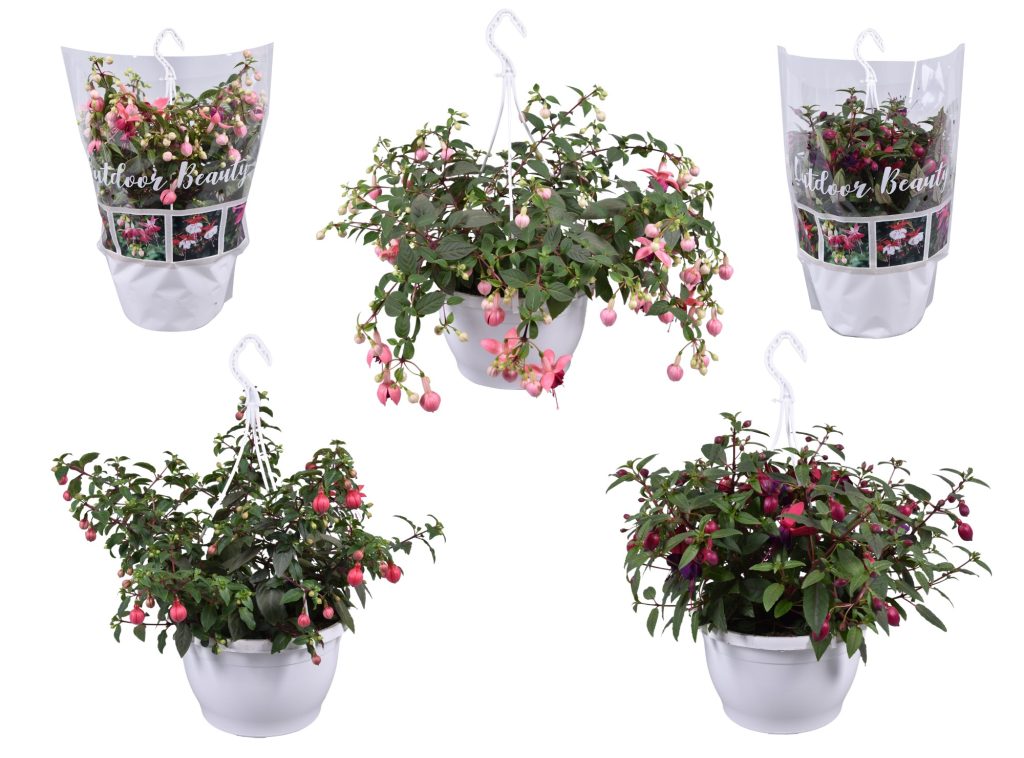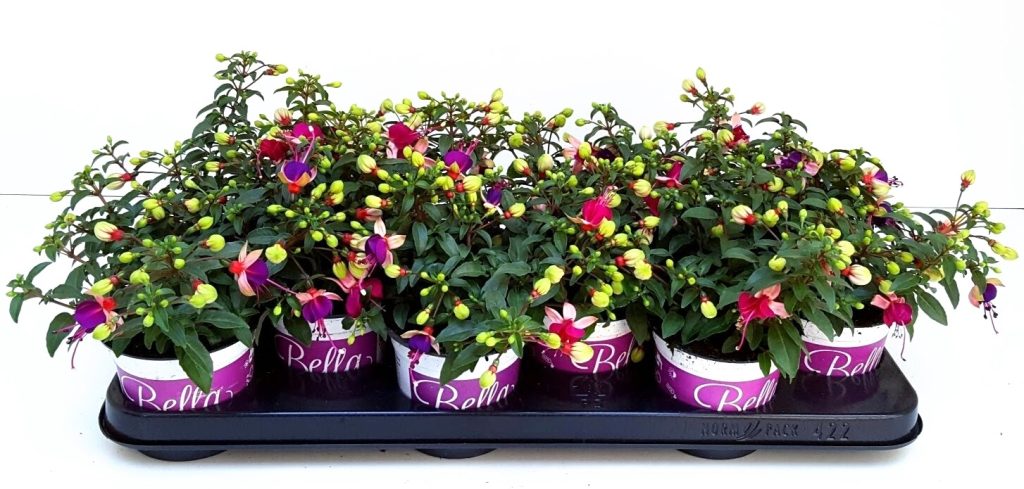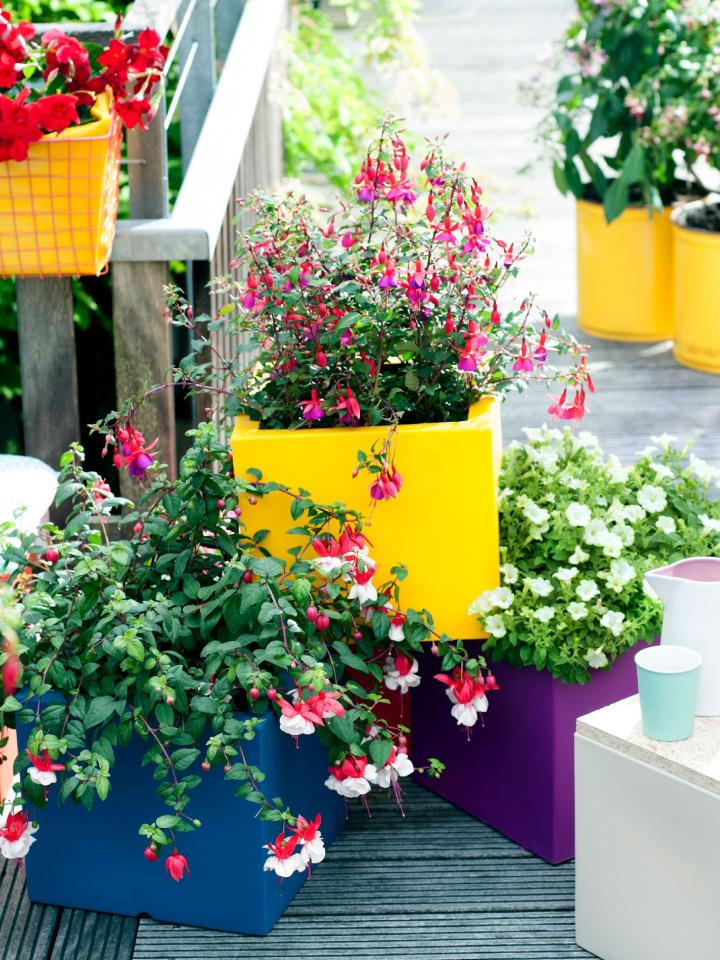03 Apr Fuchsia Plant Care: How to Grow and Maintain Beautiful Fuchsias
Fuchsia is a stunning summer bloomer that adds a burst of color to any garden, balcony, or patio. With proper fuchsia plant care, these beautiful plants will flower from June to October and attract pollinators like bees and butterflies. In this guide, you’ll learn how to care for a fuchsia plant, including different varieties, watering and pruning tips, and caring for fuchsia plants in winter to ensure year-round health.
Fuchsia Plant Care: Characteristics and Flowering

Fuchsias belong to the evening primrose family (Onagraceae) and are known for their graceful, pendant-shaped flowers. These blooms start as small bells, develop into skirts, and finally produce long, sprite-like tendrils, giving them a delicate, dancing appearance.
Colors and Growth Forms
Fuchsias come in a variety of colors and forms, making them versatile for any garden:
- Hanging baskets
- Shrubs and hedge plants
- Stemmed and bush varieties
Fuchsia flowers appear in bright pink, deep purple, red, and yellow, blooming continuously for months. Not only are they aesthetic, but they also support biodiversity by attracting bees and other beneficial insects.
Fuchsia Plant Car in Common Varieties
There are over 100 species of fuchsia, each with unique characteristics. Fuchsias fall into two main categories: hardy fuchsias (cold-tolerant) and non-hardy fuchsias (best for pots and hanging baskets).
1. Fuchsia magellanica (Hardy Fuchsia)

- Highly frost-resistant (survives temperatures as low as -15°C).
- Produces small but abundant bicolored flowers (pink to purple).
- Native to Chile and South America.
2. Fuchsia boliviana (Exotic Fuchsia)
- Known for long, tubular red or orange flowers.
- Native to Bolivia, Peru, and Argentina.
- Produces edible black berries, once used by the Incas.
3. Fuchsia x hybrida (Hybrid Fuchsia)
- A broad category covering many hybrid varieties.
- Offers diverse flower shapes and colors.
Is Fuchsia Hardy and Evergreen?
Fuchsia is not an evergreen; it is a deciduous shrub that loses its leaves in winter. Some hardy fuchsia varieties can withstand frost, while non-hardy fuchsias require extra winter care.
How to care for a Fuchsia Plant in the Winter
Winter care is essential to keep your fuchsia healthy during colder months. Whether your plant is hardy or non-hardy will determine how you should protect it from frost.

Caring for Non-Hardy Fuchsias in Winter
For non-winter-hardy fuchsias, follow these steps from October onwards:
- Move the plant indoors to a cool, frost-free space (5-10°C).
- Choose a dark spot, as fuchsias shed their leaves in winter.
- Keep the soil slightly moist—not too dry but never waterlogged.
- Ideal locations: a cellar, shed, or crawl space (avoid heated attics).
Caring for Semi-Hardy Fuchsias in Winter
Some fuchsias tolerate light frost but need protection during severe cold spells:
- Move them indoors when frost is expected.
- Wrap them in a burlap sack or bubble wrap (avoid long-term bubble wrap use to prevent mold).
Caring for Hardy Fuchsias in Winter
Hardy fuchsias can survive outdoors but require basic protection:
- Cover the base with compost or fallen leaves.
- Stems may die back in severe frost but will sprout again in spring.
Fuchsia Plant Care: How to Prune Fuchsia for Healthy Growth

Pruning is essential for healthy growth and long-lasting blooms. The method depends on whether your fuchsia is hardy or non-hardy.
Pruning Non-Hardy Fuchsias
- Summer: Remove spent flowers to encourage continuous blooming.
- Autumn (October): Before winter, cut back the plant by 30% and remove leaves, soft stems, and flowers before overwintering.
- Spring (April): Lightly prune to shape the plant and remove dead branches.
Pruning Hardy Fuchsias
- Spring pruning: Once the risk of frost is over, prune to 10 cm above the ground.
- Never prune in autumn—the stems help the plant survive winter.
Fuchsia Plant Care: Essential Tips for Healthy Growth
To keep your fuchsia thriving, follow these expert fuchsia plant care tips:
- Ensure proper drainage—fuchsias dislike soggy roots.
- Water regularly, especially in summer; don’t let the soil dry out.
- Remove dead flowers to encourage continuous blooming.
- Use liquid fertilizer occasionally to promote healthy growth.
- Place in bright but indirect sunlight—avoid full-day direct exposure.
Please consider reading these related articles:
- Art Wall Moss: Transform Your Space with Living Moss Art
- Indoor Campanula Plant Brings Nature into Your Home
- Hydrangea Care Tips – Keep Your Blooms Fresh Longer
Inspired by this article: Fuchsia


